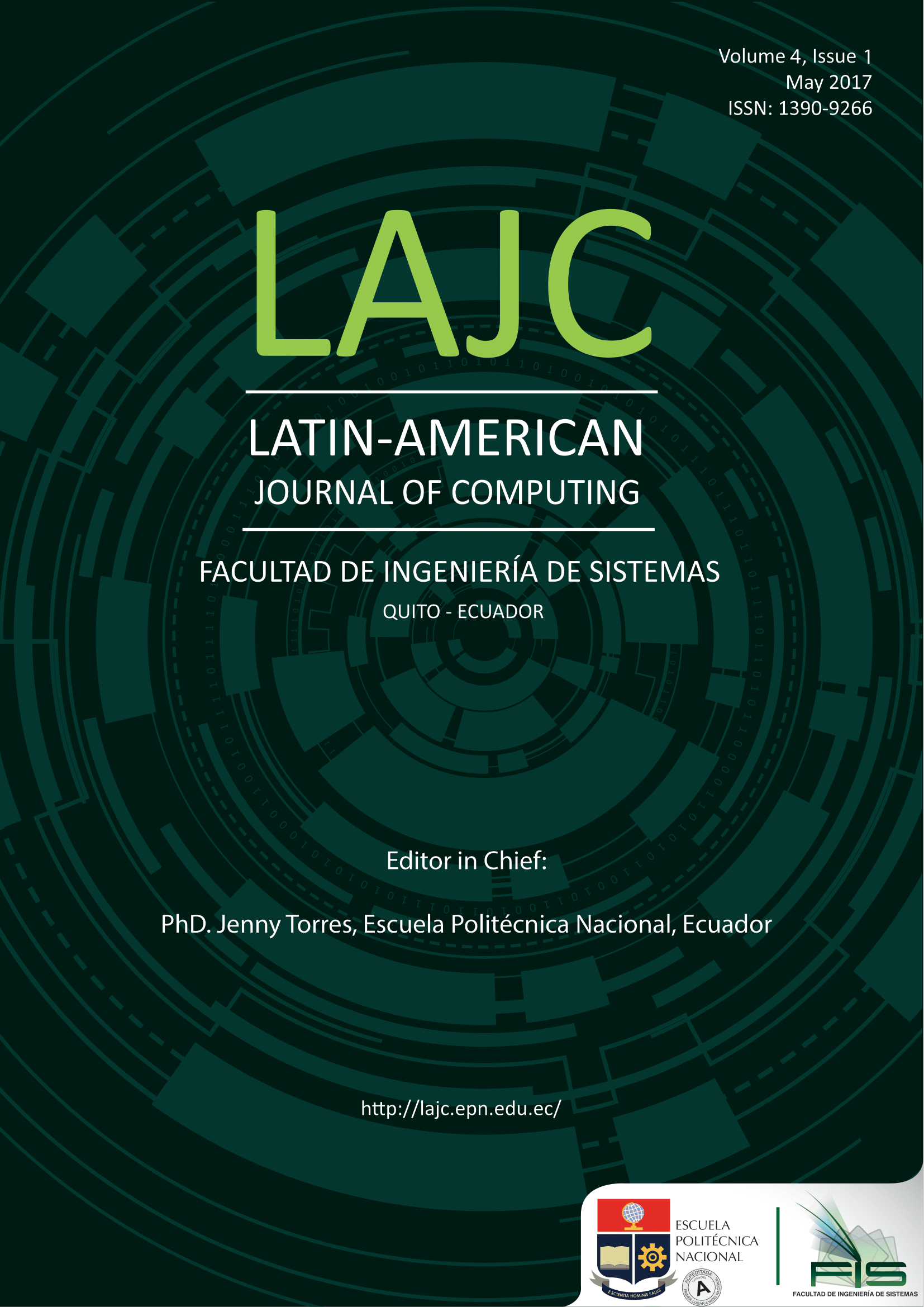Ant Colony Optimization for Optimal Workforce Planning
Keywords:
Workforce planning, metaheuristics, ant colony optimizationAbstract
In this paper the problem of obtaining the Optimal Workforce Planning for enterprises is addressed as a mathematical optimization problem. Given the complexity and specific features of the corresponding optimization model, the Ant Colony Optimization metaheuristic was applied as the solution method. From computational experiments, we have shown the effectiveness of our proposal versus other state-of-art algorithms.
Downloads
References
P. De Bruecker, J. Van den Bergh, J. Beliën, and E. Demeulemeester, “Workforce planning incorporating skills: State of the art,” Eur. J. Oper. Res., vol. 243, no. 1, pp. 1–16, 2015.
J. Wang, “A review ofoperations research applications in workforce planning and potential modelling of military training,” DSTO, 2005.
E. D. Philippe De Bruecker, Jorne Van den Bergh, Jeroen Beliën, “Workforce planning incorporating kills: State of the art,” Eur. J. Oper.Res., vol. 243, no. 1, pp. 1–16, 2015.
I. Boussaïd, J. Lepagnot, and P. Siarry, “A survey on optimization metaheuristics,” Inf. Sci. (Ny)., vol. 237, pp. 82–117, 2013.
E. Alba, G. Luque, and F. Luna, “Parallel metaheuristics for workforce planning,” J. Math. Model. Algorithms, vol. 6, no. 3, pp. 509–528, 2007.
K. M. Iman Fozveh, Hooman Salehi, “Presentation of Multi-Skill Workforce Scheduling Model and Solving the Model Using Meta-Heuristic Algorithms,” Mod. Appl. Sci., vol. 2, no. 10, pp. 194–205, 2016.
E. M. G.-N. Diego Novoa, Camilo Olarte, David Barrera, “A GRASP-based approach to the multi activity combined timetabling and crew scheduling problem considering a heterogeneous workforce,” Int. J. Ind. Eng. Comput., vol. 7, no. 4, pp. 597–606, 2016.
M. Dorigo and T. Stützle, Ant colony optimization. MIT Press, 2004.
A. Puris, “Desarrollo de meta-heurísticas poblacionales para la solución de problemas complejos,” Universidad Central “Marta Abreu” de Las Villas, 2010.
A. Puris, R. Bello, and F. Herrera, “Analysis of the efficacy of a Two-Stage methodology for ant colony optimization: Case of study with TSP and QAP,” Expert Syst. Appl., vol. 37, no. 7, 2010.
T. Glover, F., Kochenberger, G., Laguna, M., Wubbena, “Selection and assignment of a skilled workforce to meet job requirements in a fixed planning period.,” in MAEB, 2004, pp. 636–641.
M. Dorigo, M. Birattari, and T. Stutzle, “Ant colony optimization,” IEEE Comput. Intell. Mag., vol. 1, no. 4, pp. 28–39, Nov. 2006.
A. Puris, R. Bello, Y. Martínez, and A. Nowe, Two-stage ant colony optimization for solving the traveling salesman problem, vol. 4528 LNCS, no. PART 2. 2007.
L. M. Gambardella and M. Dorigo, “HAS-SOP: Hybrid Ant System For The Sequential Ordering Problem.” 1997.
J. E. Bell and P. R. McMullen, “Ant colony optimization techniques for the vehicle routing problem,” Adv. Eng. Informatics, vol. 18, no. 1, pp. 41–48, 2004.
T. Stutzle and H. H. Hoos, “MAX-MIN Ant System,” Futur. Gener. Comput. Syst., vol. 16, no. 8, pp. 889–914, 2000.
A. Puris, R. Bello, and F. Herrera, “Analysis of the efficacy of a Two-Stage methodology for ant colony optimization: Case of study with TSP and QAP,” Expert Syst. Appl., vol. 37, no. 7, pp. 5443–5453, 2010.
R. Bello, A. Puris, A. Nowe, Y. Martinez, and M. M. Garcia, “Two step ant colony system to solve the feature selection problem,” in PROGRESS IN PATTERN RECOGNITION IMAGE ANALYSIS AND APPLICATIONS PROCEEDINGS, 2006, vol. 4225, pp. 588–596.
G. G. Brunk, “A test of the Friedman-Savage gambling model,” Q. J. Econ., vol. 96, no. 2, pp. 341–348, 1981.
S. García, D. Molina, M. Lozano, and F. Herrera, “A study on the use of non-parametric tests for analyzing the evolutionary algorithms’ behaviour: a case study on the CEC’2005 Special Session on Real Parameter Optimization,” J Heuristics, vol. 15, pp. 617–644, 2009.
P. Novoa-Hernández, C. C. Corona, and D. A. Pelta, “Self-adaptive, multipopulation differential evolution in dynamic environments,” Soft Comput., vol. 17, no. 10, pp. 1861–1881, Mar. 2013.
P. Novoa-Hernández, C. C. Corona, and D. A. Pelta, “Self-adaptation in dynamic environments -a survey and open issues,” Int. J. Bio-Inspired Comput., vol. 8, no. 1, pp. 1–13, 2016.
Downloads
Published
Issue
Section
License
Copyright Notice
Authors who publish this journal agree to the following terms:
- Authors retain copyright and grant the journal right of first publication with the work simultaneously licensed under a Creative Commons Attribution-Non-Commercial-Share-Alike 4.0 International 4.0 that allows others to share the work with an acknowledgement of the work's authorship and initial publication in this journal.
- Authors are able to enter into separate, additional contractual arrangements for the non-exclusive distribution of the journal's published version of the work (e.g., post it to an institutional repository or publish it in a book), with an acknowledgement of its initial publication in this journal.
- Authors are permitted and encouraged to post their work online (e.g., in institutional repositories or on their website) prior to and during the submission process, as it can lead to productive exchanges, as well as earlier and greater citation of published work.
Disclaimer
LAJC in no event shall be liable for any direct, indirect, incidental, punitive, or consequential copyright infringement claims related to articles that have been submitted for evaluation, or published in any issue of this journal. Find out more in our Disclaimer Notice.










